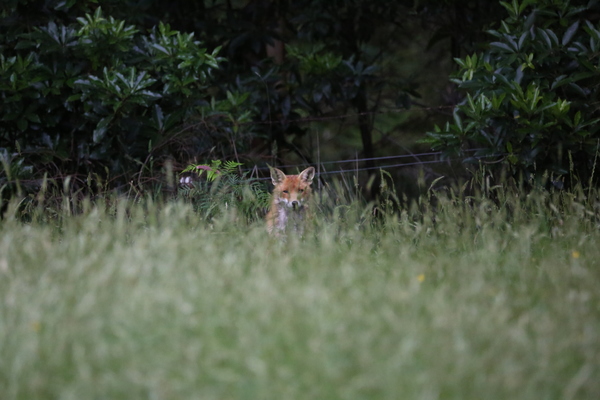In an effort to protect our native wildlife from the predatory fox, four local organisations are again joining forces to control foxes in coastal bushland areas from Mudjimba to Peregian Springs.
Noosa Council, Sunshine Coast Council, Queensland Parks and Wildlife Service (QPWS), Coolum and North Shore Coast Carewill be working together to carry out the Coastal Fox Control Program between April 21 and June 19, 2020.
The European red fox is a declared pest in Queensland under the Biosecurity Act 2014.
The program is designed to control fox breeding activity and reduce fox predation on vulnerable populations of native species such as vulnerable water mice, Eastern ground parrots, and endangered green and loggerhead turtles at the egg and hatchling stage.
Sunshine Coast Council’s Team Leader Feral Animal Education and Control, Anthony Cathcart said the program was planned to protect native wildlife and impact fox populations at a time when they were particularly active.
“Together with our partners, council has been running this program for six years now, with extremely positive results, and it’s imperative that we continue to monitor the fox activity,” Mr Cathcart said.
“Under the Biosecurity Act 2014, managing biosecurity, which includes invasive animals and plants, is a key responsibility of council and every Sunshine Coast resident.
“Managing biosecurity means we’re protecting our rich biodiversity here on the Sunshine Coast and it’s important that we ensure the coastal fox population doesn’t recover to pre-control levels.
“We have received great community support for this program in the past and we’re looking forward to continued support to ensure the longevity and security of native species in our region into the future.”
To provide guidance and information for residents and visitors, nearby residents will be notified and areas affected by the control program will be clearly identified by warning signs at all entrances.
“While the program is underway, it’s important for all residents and visitors to the area to be mindful of the signage that will be in place and to ensure their pets are not allowed to roam,” Mr Cathcart said.
As a result of the control program, 129 foxes have been removed and more than 281 fox dens have been inspected for signs of activity.
The fox control program uses best practice control methods which have been developed and demonstrated in highly successful wildlife conservation programs including the Northern Sydney regional fox control program and Western Australia’s black flanked wallaby recovery program.
More information about the program is available on council’s website – www.sunshinecoast.qld.gov.au/Environment/Invasive-plants-and-animals/Invasive-animals/Managing-Invasive-Animals/What-council-is-doing/Coastal-fox-control-program
Residents can assist with the management of foxes by reporting suspected fox dens in the program area to council on 5475 7272. View the fox den identification fact sheet on council’s website.







